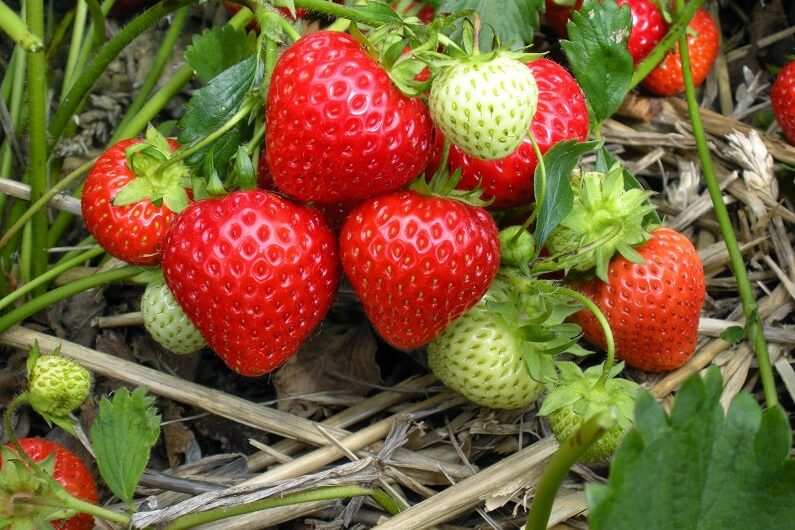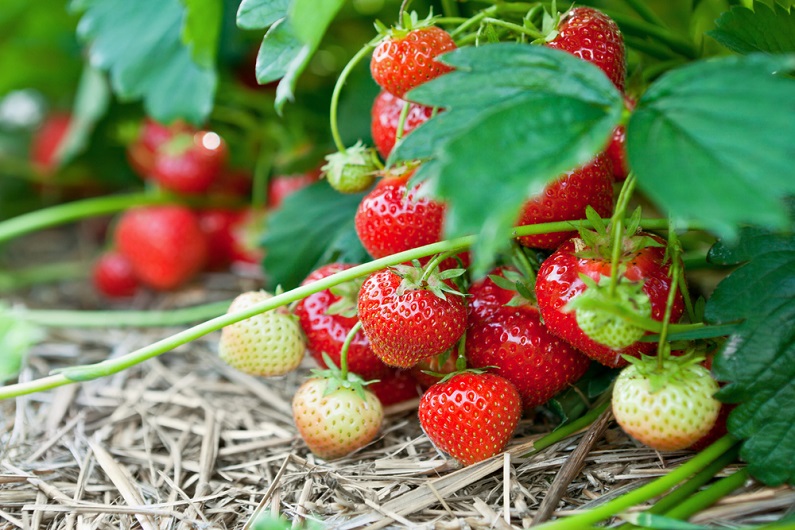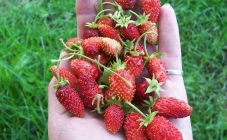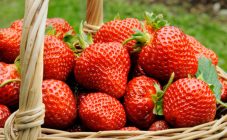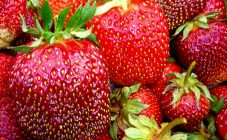Once upon a time, wild strawberries were harvested as a medicinal plant. Then they began to cultivate on garden plantations for use in food, appreciating the tasting qualities of the berries. The first varieties appeared by accident, as a result of cross-pollination.
Now, thanks to breeders, several varieties of crops can be grown on the site. Among them, remontant strawberry varieties have gained particular popularity.
About repairmen
The whole berry culture is divided into 3 groups: garden strawberries, remontant and hybrid earthworms. It is the remontants that are now given special attention, due to their ability to bear fruit several times during the growing season: at the beginning of summer, at the end, in the southern regions also in autumn.
For strawberry cultivation to be successful, you need to choose the right variety. They pay attention to many features: yield, exactingness to agricultural technology, disease resistance, regionality.
Those who are attracted by remontant strawberries choose the best varieties taking into account the place of their cultivation: in a garden bed or in a greenhouse. The second option allows you to increase the number of fruiting.
All remontants are divided into varieties with large and small berries. Among the first group there is a variety of strawberries without a mustache, propagating by dividing a bush or by seeds.
Small-fruited varieties are more of a home option used for landscaping balconies and loggias. They are also decorated with alpine slides. In greenhouse cultivation, the ampel method is used - many varieties throw out long drooping mustaches. The more of them, the higher the yield of the bush.
TOP review
Taking into account the classification and other features of the culture, the gardener looks for suitable strawberry varieties for himself. Below is an overview of the most popular ones.
Remaining strawberry varieties
You should also pay attention to such best varieties of remontant bezus strawberries, famous for their high yield and good taste - Vima Rina, Garland, Koketka.
The Tristan variety is almost beardless, so it is more often propagated by dividing the bush. Among the small-fruited culture, there are also hybrids that do not give a mustache: Pharaoh, Ruyana, Yellow Miracle (this variety has an amazing pineapple taste).
| Name (selection) | Description | Features: | |
|---|---|---|---|
| Large-fruited variety | |||
| Bourbon (French) | Berries are juicy, elongated, conical, weighing 40 g. They have a harmonious taste and pleasant strawberry aroma. | · Enters the fruiting stage earlier than anyone else and gives berries throughout the season; Suitable for growing in many regions of the country of Russia | |
| Montana (Dutch) | Compact bush with juicy aromatic berries | · It is a mustless strawberry, propagated exclusively by seeds; · Stands out for decorativeness and is often grown in pots; Refers to neutral day hybrids | |
| Diva | The hybrid produces richly sweet red berries. | Differs in high peduncles on a powerful bush | |
| Moscow delicacy | Large fruits, juicy, tasty | · Practically does not give whiskers, reproduction is carried out by seeds; · Average yield. The main peak of fruiting occurs in the autumn period. It can be extended by making a film cover | |
| Brighton (American) | On a low-leafed bush, many conical sweet and sour berries are formed | Produces high yields even in regions with short daylight hours | |
| Everest Edward Windson (English) | The bush is powerful, the berries are juicy, dense, weighing more than 40 g. | Some of the plants may not produce whiskers, so it is better to propagate by dividing the bush or by seeds; High yield, fruits can be harvested from July to October | |
| Queen Elizabeth (English) | A medium-sized bush gives dense juicy berries, weighing up to 50 g | · Refers to varieties of continuous fruiting; · Gives high yields in the open field from July to October; Drops a moderate amount of mustache | |
| Profusion (French) | Conical, fragrant red berries with good agricultural technology weigh at least 50 g. | High-yielding variety with continuous fruiting throughout the season | |
| Small-fruited variety | |||
| Lyubava (Russian) | Rhombic dark red berries are characterized by an intensity of aroma and smell | Fruits are formed even on rosettes, which allows the use of a high-yielding bush in vertical cultivation | |
| Herzberg Triumph (German) | Truncated-conical fruits with juicy tender pulp barely reach 6.5 g. | · At the same time throws out a large number of mustaches; Attracts with its decorativeness | |
| Ada (German) | Conical, slightly elongated berry has a sour-sweet flavor | High-yielding variety with lots of whiskers | |
| Mount Everest | Small conical berries with high tasting properties | · A powerful bush gives a large amount of foliage and high peduncles; Throws out sockets only in the first year of life, therefore it belongs to the variety of beardless strawberries |
There are varieties with neutral daylight hours that bear fruit until late autumn. They are more suitable for growing in all regions, they are also suitable for the greenhouse version. If you are going to propagate remontant strawberries, they first study the question: is the variety suitable for this climatic zone.
Regional features
| Climatic region | Features of zoning | Recommended varieties of remontant hybrids |
|---|---|---|
| Central (in particular, Moscow region) | · The average duration of the warm period is 120-150 days; Considered a region of cultural berry growing where many varieties can be grown | Tribute, Tristar, Roman, Merlan, Figaro, Ostara, Cardinal, Cascade, Garland, Diamant, Lyubava, Yellow miracle, Brighton, Moscow delicacy, etc. |
| Northwest | In the scientific literature it can be called the "belt of berry crops". In the region, the frost-free season is 100-140 days (in Kaliningrad, even 180) | |
| Black earth | · Region of traditional gardening. The type of climate is most similar to the southern regions; The period without cold weather lasts 140-170 days | You can safely grow all varieties without exception, creating the necessary conditions |
| North Caucasian (Krasnodar and Stavropol Territories stand out) | The best conditions for growing berry crops. The only drawback is the moisture limit | |
| Volga region | Consists of 3 regions: · Volgo-Vyatka, where the frost-free period is 60-157 days; Sredne-Volzhsky - 112-150 days; · Nizhnevolzhsky - 130-177 days (in Kalmykia even 250 days of stable heat). Strawberries are grown everywhere, only in the first case, a greenhouse is more often used for this, in the third, protection from droughts is needed | The most adapted to the climate are Zolotinka, Lyubava, Alexandria, Ali Baba, Holiday, Elsenore |
| Ural | The duration of the heat is 105-240 days, depending on the climatic part of the region: the European plain, desert or tundra | Alexandria, Baron Solemacher, Yoshkarolinka, Yellow miracle, Coquette, Rugen, Ruyana |
| Siberia | Divide the zone into Western and Eastern. Both belong to the region of risky gardening | Queen Elizabeth, Mount Everest, Ada, Russian size, Prima donna, Inexhaustible |
| Northern | A risky gardening zone with a warm period of 60-125 days | The best option is greenhouse varieties |
| Far East | An unpredictable monsoon climate makes gardening difficult |
Many of the remontants listed above are suitable for greenhouse cultivation. But there are other varieties worth paying attention to.
Repair strawberries for greenhouses
| Variety (selection) | Description |
|---|---|
| Alexandria (Swiss) | Small bright red cone fruits have a glossy hue. The bush does not give a mustache, prefers to propagate by seeds. Possesses persistent immunity |
| Fragrant basket (Russian) | Small elongated berries look like wild strawberries and have the same persistent aroma. It does not give layering, it can be propagated by dividing the bush and seeds. Drought tolerant variety |
| Elizabeth 2 (English) | Belongs to the group of large-fruited strawberry varieties that bear fruit all summer. When grown in a greenhouse, the harvest is extended over a longer period. Throws out bisexual flowers, gives little mustache, therefore, it is better to propagate in other ways |
| Selva (Czech) | Large-fruited variety that produces an oval berry with crispy white flesh. Sensitive to moisture deficiency and high temperatures. You can only plant by dividing the bush |
Other varieties of neutral daylight are also suitable for growing in a greenhouse: Brighton, Supreme, Referent, Tribute.
In regions with a short warm season, growing strawberries in the open field is possible if you do it in stages. First, seedlings are formed in the greenhouse, which are planted in the garden with the onset of heat. It is rational to plant the bushes in pots so that with the arrival of cold weather they can be brought into the greenhouse.
Features of agricultural technology
Attention should be paid to the cultivation of reusable strawberries. Then in each fruiting run there will be good yields of tasty juicy berries. Remontants have an accelerated fruiting cycle, and if you ignore the rules of agricultural technology, then next year you can get nondescript small fruits.
It is especially important to pay attention to mustache-free varieties grown in seedlings. It is important to comply with the following requirements:
- a well-lit area is chosen for strawberries;
- seedlings can be assigned to a permanent place from July to the end of September;
- the distance between the bushes is maintained at least 40 cm, between the rows - 0.5-0.7 m; for varieties emitting a long mustache, these parameters should be higher;
- after the planting is over, all the peduncles that appear should be cut off;
- repaired remontants cut off before the very cold (some bushes are completely brought into greenhouses), the beds are covered with a thick layer of mulch.
It is necessary to take into account other features of caring for a multi-fertile culture:
- loosen the soil and regularly refresh the mulch;
- if the roots of the garden strawberry are bare, hilling is carried out;
- maintain an optimal irrigation regime using only warm water;
- so that the bushes do not weaken due to frequent fruiting, they are systematically fed;
- after the first harvest, the foliage on the bushes is cut off to give the strawberries a little rest;
- Plants are periodically inspected for the timely detection of diseases and pests.
Variety of choice
The mention of wild strawberries can be found in the treatises of Virgil and Dioscorides. In the 18th century, a real boom in garden strawberries began, thanks to breeders from Holland. Now, along with the usual varieties, the summer resident is offered a large selection of various hybrids (domestic and foreign), where remontants occupy a leading place.
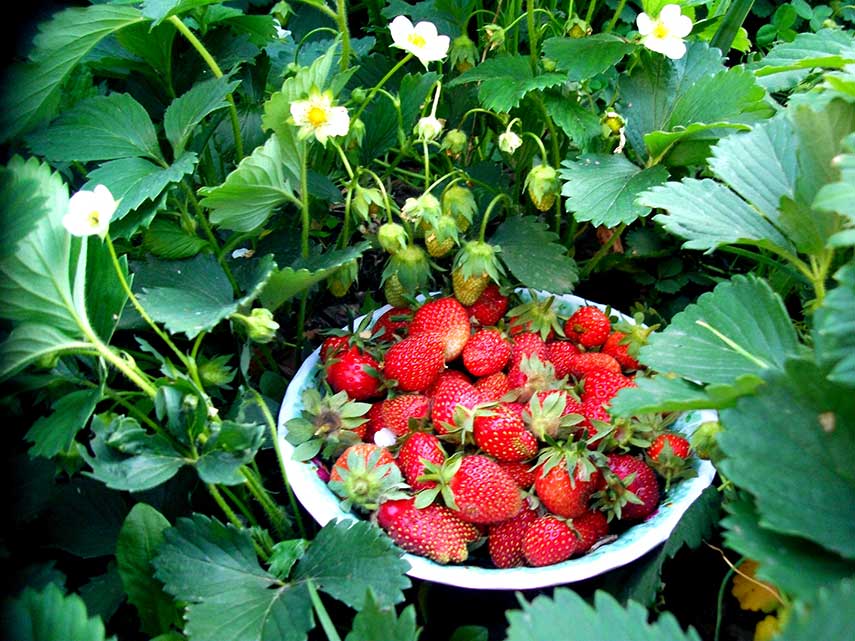
The yield of strawberries, the duration of its fruiting, convenience in picking fruits are the main criteria for choosing.
When choosing varieties, it is important to pay attention to zoning, the main feature in this case is the winter hardiness of the culture.Other climatic factors in this case have less influence on the cultivation of hybrids. The yield of strawberries, the duration of its fruiting, convenience in picking fruits are the main criteria for choosing.
Each gardener may have different preferences. But, deciding which is better remontant or ordinary strawberry, you should not dwell on one or two names - the more varied the plantation turns out, the more profitable the summer resident. And not because there will be an abundance of tasty fruits on the table - many hybrid varieties need pollinating neighbors due to the presence of only female flowers. Representatives of traditional garden strawberries are well suited for this role (despite a one-time harvest).
